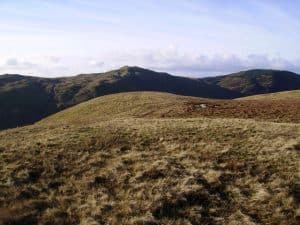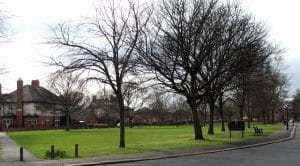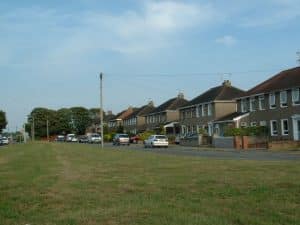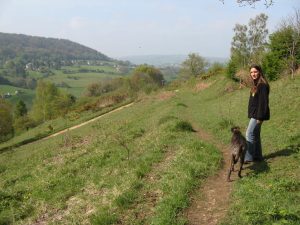Support us from £3/month
We deal with almost 1000 cases a year assisting communities, groups and individuals in protecting their local spaces and paths in all parts of England and Wales. Can you help us by joining as a member?
Fifty years ago today, on 2 January 1967, the commons and greens registers in England and Wales were opened, writes Kate Ashbrook. This was the start of a period of feverish activity for the Commons, Open Spaces and Footpaths Preservation Society, as we were then known. The registers were created following the Commons Registration Act 1965, and the society took the lead in making applications.
The registration period was far too short, running only until 31 July 1970, and so we had no time to waste. During the first registration period, 2 January 1967 to 1 July 1968, people could make applications without having to pay a fee. After that, for the second period from July 1968 to July 1970, the fee was £5 per application, but if one had put in a CR form 5, which gave notice of intention to apply after that date, there was no charge.
Conference
The society ran a conference on 19 November 1966 to explain the registration process to local authorities, commoners, voluntary bodies and individual members. We produced our own forms for people to use in gathering evidence. We published guidance about the many official forms; the process was not simple. We were one of a number of organisations which sponsored the Central Committee on Commons Registration (CCCR); this set up a documentary research service to coordinate activity, and appointed Dr Brenda Swann, a left-wing activist from the London School of Economics, as research secretary. Dr Swann published a pamphlet The registration of common land and rights of common, to assist applicants.
The National Playing Fields Association ran a competition among its county branches with a substantial prize for the branch which found and registered the most recreation allotments as village greens. We have no record of which branch won, or what the prize was.
In the first year the society concentrated on commons and greens which were subject to statutory orders and maps, such as a scheme under the Commons Acts 1876 and 1899, or deeds under the Law of Property Act 1925, which were on deposit in the Public Record Office. The list published in the Journal of spring 1968 contained 11 commons and five greens.
Employed
In March 1968 the society, with financial help from the Ramblers, employed Alan Mattingly, a geography student, to help with registration. He wrote about his appointment in the Journal of autumn 1968:
‘With only three months left to the end of the free registration period, any careful listener walking past 166 Shaftesbury Avenue [the office of the society] would have discerned a disturbed mutter apparently coming from the suite on the second floor. The Commons Preservation Society was definitely worried. So, too, was the Ramblers’ Association. Thus, owing to the foresight of the former and the benevolence of the latter, a meeting of three High Priests of Commons Registration and myself was held in the slightly incongruous surroundings of the nearest Wimpy Bar, where the details of the task I was to undertake were thrashed out’.

Roundthwaite Common, Cumbria, registered by the society. ©copyright Michael Graham and licensed for reuse under the Creative Commons Licence
Alan went from the Peak District along the length of the Pennines to the Cheviots, to the Lake District, North York Moors and central Wales. He began by mapping the boundaries of land, asking questions of local residents to check that it was common land and preparing maps and forms for registration. He soon discovered that it was more profitable to locate people, usually farmers, who were anxious to register common land or rights and help them through the process. Potential applicants quickly lost patience with the complexities of the process, but if rights were not registered they would cease to be exercisable.
In the same Journal, Brenda Swann wrote that with the end of the free period rapidly approaching, the CCCR had decided that efforts should be concentrated on getting publicity for the registration procedure and on trying to arrange that all common land not yet registered should be covered by a form 5 notification. She observed that ‘except for the “Archers”, which has resolutely refused to register Ambridge Village Green or any common in its parish, a considerable amount of publicity was obtained’.
Recreational allotments
In 1968 the society registered 55 commons and 53 greens. In addition to Brenda Swann, the society was much assisted by Theo Durrant, a member of the executive committee who retired as Surrey County Planning Officer and was responsible for over half the society’s registrations. He concentrated on recreational allotments in inclosure awards which meant studying some early and difficult nineteenth-century maps in the Public Record Office. The society’s accountant, Frank Thomas, was a JP and in that capacity he witnessed and signed all the statutory declarations.
The objection period for registrations made in the first period (January 1967 to June 1968) started in October 1968 and there was immediately an objection to the society’s registration of the village green at Snetterton in Norfolk. The society also issued advice on fighting objections, including the recommendation to set up a group to protect the disputed registration and raise money for the hearing before the commons commissioner, who would determine the matter. It urged people not to be hustled or panicked into withdrawing the application.
By 1969 the society was concentrating on registering greens, and in that year it registered 191 greens and eight commons. During the two periods for registration the society registered about 400 commons and greens.

The green at Wallsend, Northumberland, registered by the society. ©copyright Christine Westerback and licensed for reuse under the Creative Commons Licence.
Three years was not of course enough time for the massive job which needed doing, and the society arranged for parliamentary questions to be asked, pressing the Minister of Housing and Local Government, Anthony Greenwood, to extend the registration period. He refused.
Commons commissioners
In 1970 the CCCR was wound up and Brenda Swann moved to a research job with Kent University. In autumn 1971 the society was concerned that the department had failed to appoint any commons commissioners but at last, in November 1971, George Squibb, former recorder of Dorset, was appointed as chief commons commissioner, and others followed. The hearings were finally under way—and they continued for decades.

Newton Nottage near Porthcawl, the society registered a green here. ©copyright Chris Shaw and licensed for reuse under the Creative Commons Licence.
The Journal of spring 1972 published the list of the society’s first-period registrations which were final. There were 13 commons (for example, St Cleer Downs, Cornwall; Mulbarton Common, Norfolk; the old racecourse at Oswestry in Shropshire; Tebay Fell in Westmorland and Skipwith Common in the East Riding of Yorkshire) and 10 village greens (for example Steep Green, Hampshire; Therfield Green, Herts; Wallsend Green, Northumberland, and Cefn Isaf Green at Clogaenog in Denbighshire).
We know that, due to the necessity for speed, some commons and greens were registered mistakenly, but we also know that far many more were omitted which should have been registered.
There is a limited opportunity now to rectify those mistakes with the reopening of the registers in England under part 1 of the Commons Act 2006—but we can only retrieve lost commons in the nine pioneer areas of Blackburn with Darwen, Cornwall, Cumbria, Devon, Herefordshire, Hertfordshire, Kent, Lancashire and North Yorkshire. We still need the Westminster Government to agree to reopen the registers fully throughout England and the Welsh Government to do likewise in Wales.

